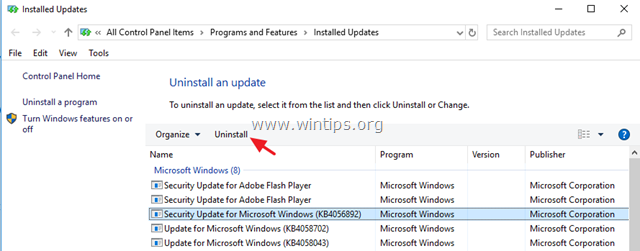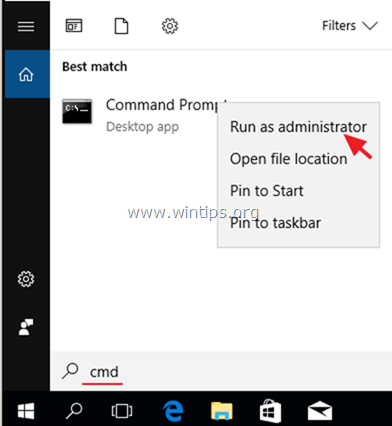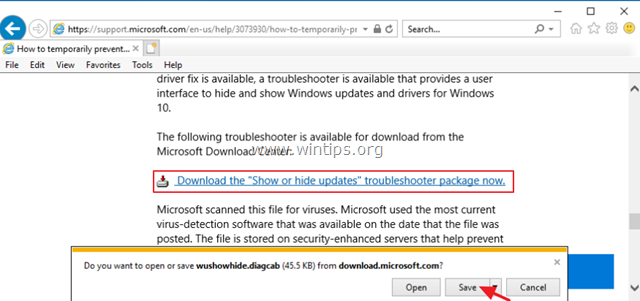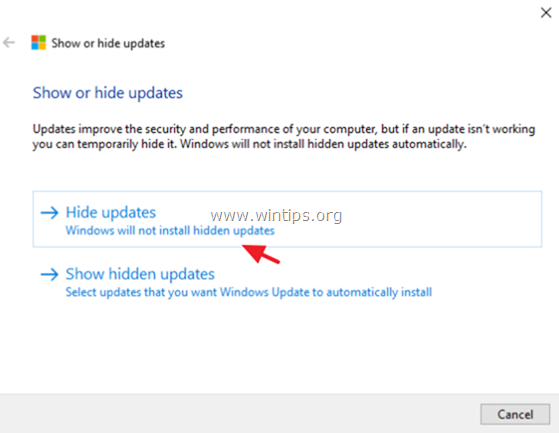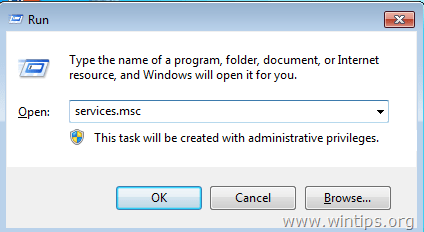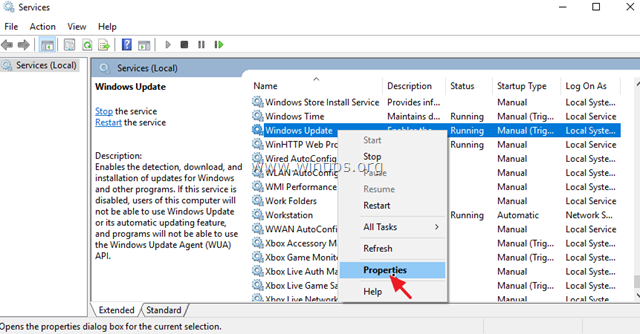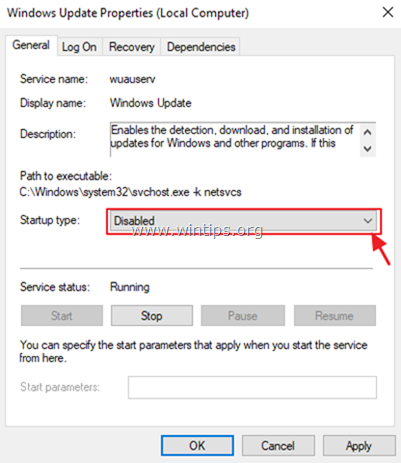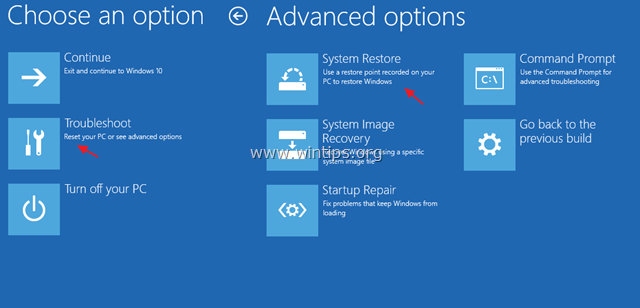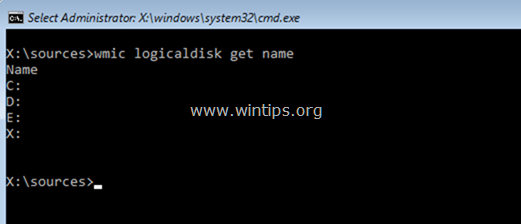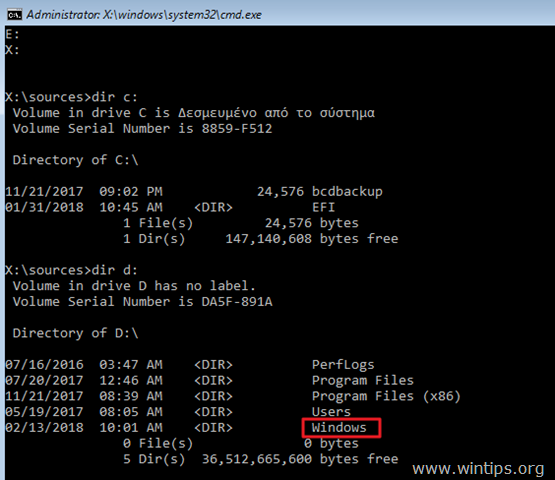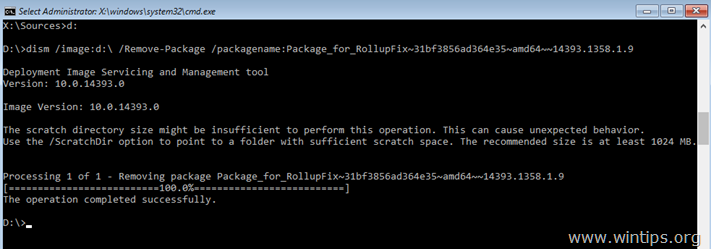FIX: Windows 10 Update KB4056892 fails to install 0x800f0845
The Windows 10 KB4056892 update, patches the problems with Meltdown and Spectre CPU vulnerabilities that affect chips manufactured by Intel, AMD and ARM. But, in most cases, the Windows 10 Update KB4056892 fails to install with BSOD error 0x800f0845 or causes the PC to crash
after its installation and to enter to an unbootable state.
In this tutorial you 'll find detailed instructions on how to resolve problems with the installation of the KB4056892 update on Windows 10.
How to fix: Windows 10 Update KB4056892 fails to install with BSOD error 0x800f0845
Case A. If you can sign in to Windows (Windows Starts Normally).
- Method 1. Install the KB4073290 Update.
- Method 2. Start the 'TrustedInstaller' before installing the KB4056892 update.
- Method 3. Prevent the update KB4056892 to be installed.
- Method 4. Repair Windows 10 with an in-place Upgrade.
- Method 5. Disable Windows 10 Updates.
Case B. If you cannot sign in to Windows (Windows Cannot Start).
- Method 5. Restore your System to a Previous working State.
- Method 6. Uninstall the KB4056892 using command prompt and DISM tool.
Case A. If you can sign in to Windows (Windows Starts Normally).
– If your computer starts normally and you can sign into Windows, follow the below methods to fix problems with the Windows 10 KB4056892 Update.
Method 1. Install the KB4073290 Update.
– If the KB4056892 update has not yet been installed , then download and install the KB4073290 Cumulative update that resolves issues with the KB4056892.
– If the KB4056892 update has already installed on your system, then:
1. Go to Settings -> Update and Security and click View installed update history.
2. Click Uninstall updates.
3. Highlight the KB4056892 update and click Uninstall.
4. After uninstalling the KB4056892 update, download and install the KB4073290 Cumulative update.
Method 2. Start the 'TrustedInstaller' before installing the KB4056892 update.
1. Open command prompt as administrator. To do that:
1. In the Search box type: cmd or command prompt
2. Right click on the command prompt (result) and select Run as Administrator.
2. In command prompt type the following command and Press Enter:
- SC config trustedinstaller start=auto
3. Close command prompt and restart your PC.
4. After restart, go to Settings > Update & Security and check and install all available updates.
Method 3. Prevent the update KB4056892 to be installed.
The second method to fix problems with the KB4056892 update installation, is to block the KB4056892 from installing on the PC. To do that:
1. Navigate to this link: https://support.microsoft.com/en-us/kb/3073930
2. Scroll down and click at Download the "Show or hide updates" troubleshooter package now link and Save the file to your computer. *
* Notes: Since Microsoft has removed the tool from its support page, you can download it from MajorGeeks.
3. Run the downloaded file, and click Next at the first screen.
4. Then click Hide updates.
5. Select the KB4056892 and click Next.
6. Close the "Show Hide updates" utility.
7. Finally proceed and install the KB4073290 Cumulative update.
Method 4. Repair Windows 10 with an in-place Upgrade.
Another method that usually works, to fix Windows 10 update problems, is to perform a Windows 10 Repair-Upgrade, by using the Media Creation tool to create an ISO or a USB Windows 10 installation media. For that task follow the detailed instructions on this article: How to repair Windows 10.
Method 5. Disable Windows 10 Updates.
The final method to avoid problems with the installation of the KB4056892 update in Windows 10, is to completely disable the Windows Update service, until Microsoft releases a fix for the issue. To do that:
1. Simultaneously press the Windows ![]() + R keys to open run command box.
+ R keys to open run command box.
2. In run command box, type: services.msc and press Enter.
3. Right click on Windows Update service and select Properties.
4. Set the Startup type to Disabled and click OK.
5. Restart your computer.
Case B. If you cannot sign in to Windows (Windows Cannot Start).
– If Windows doesn't start normally and you cannot sign into Windows, then you need to start your PC from a USB or DVD Windows installation media,* in order to resolve the installation issues of the KB4056892 update on Windows 10.
* Note: If you don't own a Windows installation media, then you can create one (from another working computer), by following the instructions on these articles:
- How to create a bootable Windows 10 DVD installation media.
- How to create a bootable Windows 10 USB installation media.
Method 5. Restore your System to a Previous Working State.
1. Boot your computer, from the Windows 10 installation media.
2. At the Windows Language Setup screen click Next and then click Repair your computer.
3. Then click Troubleshoot –> System Restore.
4. At System Restore (1st) screen click Next.
5. Select a previous restore point and then click Next.
6. Then click Finish (and Yes to confirm your decision) to restore your system at the selected date (restore point).
7. Now wait until the restore process is completed. During the restore process, your computer will restart several times and when it's done, you should enter in Windows without problems.
8. After restoring your system, proceed and install the KB4073290 Cumulative update.
Method 6. Uninstall the KB4056892 using command prompt and DISM tool.
1. Boot your computer, from the Windows 10 installation media.
2. At the Windows Language Setup screen press SHIFT + F10 to access command prompt, or click Next –> Repair your computer –> Troubleshoot –> Advanced Options –> Command Prompt.
3. Inside the command prompt window, type the following command and press Enter, to view all the available drives on your system:
- wmic logicaldisk get name
4. Now, by using the "DIR <Drive_Letter>" command, examine the contents of all listed drives (except the drive X:), to find out which drive contains the "Windows" folder. (e.g. "dir C:") *
- dir C:
* Note: The above command will display a list of the folders on the drive C:
– If you can see the "Windows" folder, then continue to the next step.
– If you cannot see the "Windows" folder on the C: drive, then move to the next drive on the list. (e.g. dir D:, dir E:, etc.), until you find out which drive contains the "Windows" folder.
5. When you locate the drive with the "Windows" folder, then navigate to that drive, by typing its drive letter. At this example, the "Windows" folder is located at "D:" drive, so we have to type:
- D:
6. Finally give this command to remove the KB4056892 update: *
- dism /image:D:\ /Remove-Package /PackageName:Package_for_RollupFix~31bf3856ad364e35~amd64~~16299.192.1.9
* Note: Change the drive letter "D" at the above command according to your case.
7. When the operation is completed successfully,* close the command prompt window and restart your computer normally.
* Note: If you receive an error message (e.g. "Error 5, Access is Denied 0x80070005"), then give the above DISM command again.
8. After login, proceed and install the KB4073290 Cumulative update.
That's it! Which method worked for you?
Let me know if this guide has helped you by leaving your comment about your experience. Please like and share this guide to help others.
We're hiring
We're looking for part-time or full-time technical writers to join our team! It's about a remote position that qualified tech writers from anywhere in the world can apply. Click here for more details.
- FIX: Numeric keypad Not Working on Windows 10/11 - July 24, 2024
- How to Share Files or Printers in Hyper-V? - July 22, 2024
- How to invoke Hyper-V Screen resolution prompt? - July 17, 2024


